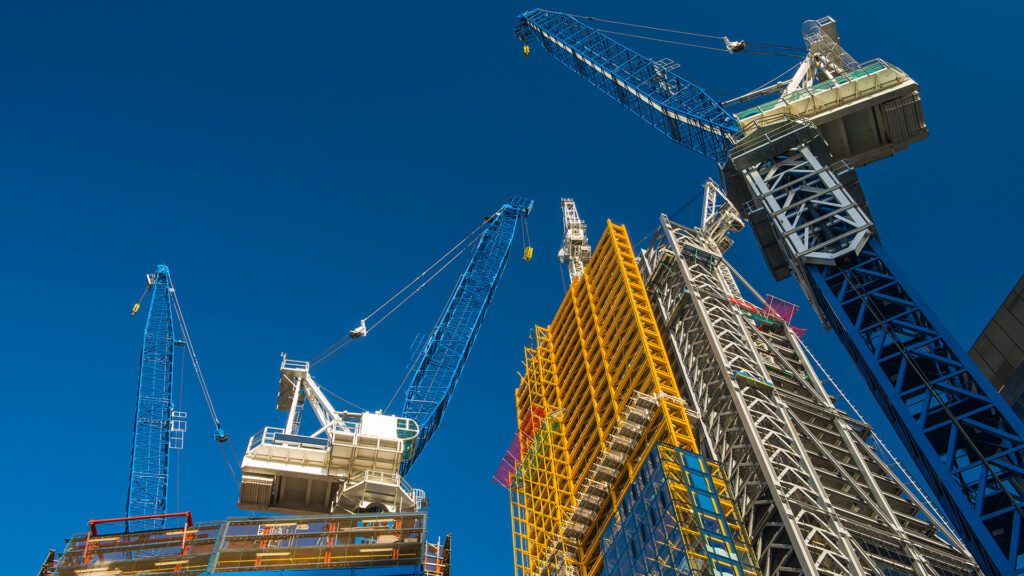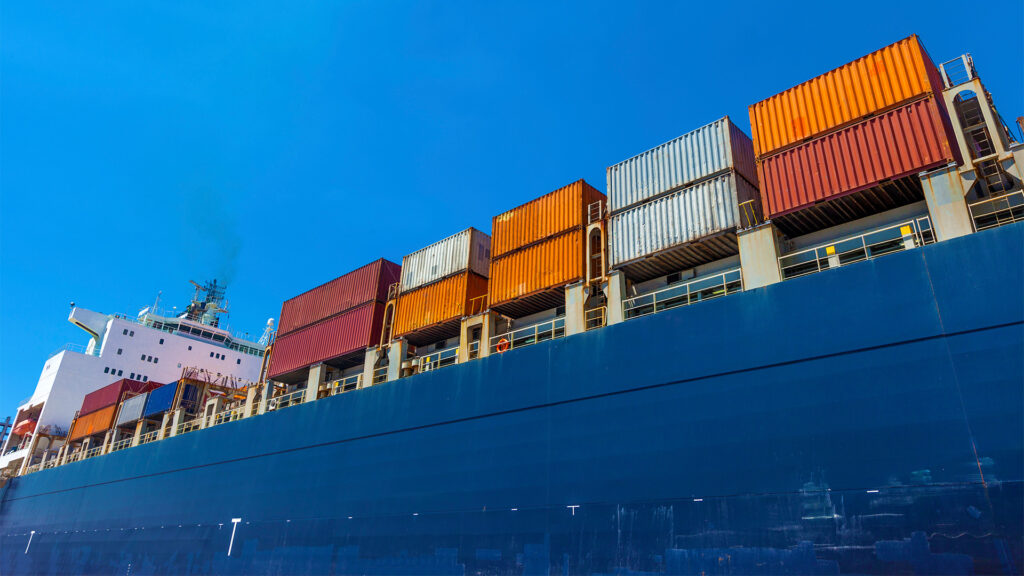Decommissioning Bulletin, April 2023
In this update, we analyse key legal developments in decommissioning.
The Next Decade of Decommissioning in the UK
Decade of expansion forecast for the decommissioning sector
According to a recent industry report, Decommissioning Insight 2022, published at the end of last year by the UK’s leading offshore industry body, Offshore Energies UK (OEUK), the decommissioning sector related to offshore oil and gas infrastructures in the UK Continental Shelf (UKCS) and the wider North Sea is entering a decade of expansion potentially worth around £20bn to the UK supply chain from now to 2031.1 The report highlights opportunities for the UK decommissioning sector with significant growth across all decommissioning activities but also new challenges, notably the expected heavy workload for the supply chain with increased demand due to the acceleration in the growth of emerging energies. Alongside the scale up of decommissioning in the oil and gas industry, the offshore wind industry will also increasingly call on the experiences and services of the decommissioning sector in designing wind farms for decommissioning, as well as the delivery of decommissioning of offshore wind installations.
The current landscape of the UK oil and gas decommissioning sector
Decommissioning of the UK’s offshore oil and gas infrastructure is expected to increase significantly over the next decade due to its aging assets and the maturity of its fields. Decommissioning moreover now has a pivotal role within the UK’s energy transition to renewable energies. At the same time, there remain significant prospective resources in the North Sea which are key to the UK’s energy security.
At the start of this decade, it was reported that only 15% of assets in the North Sea had been decommissioned, and an average of 23 assets were predicted to cease production annually over the coming five years. 2 The OEUK report forecasts that over the next decade the UKCS will see the decommissioning of 2,102 wells, removal of over 1,500,000 metric tonnes of material in connection with well decommissioning (topsides, substructures, FPSOs, and subsea structures) with topsides accounting for the majority, removal of 40,898 mattresses and decommissioning of 10,552 km of pipelines, subsea umbilicals, and cables. Alongside the steady stream of work, the report indicates that the growth rate of decommissioning activities may pose a challenge to the UK supply chain (materials, labour, and availability of specialist heavy lift vessels).
Decommissioning expenditure is in consequence also projected to rise costing £19.7bn in the period 2022-31 according to the OEUK report. Expenditure reportedly rose by almost one fifth to £1.273bn in 2021 and to £1.97 possibly even £2bn in 2022. The upsurge means that the average decommissioning spend per year is forecast to rise from £1.23bn for the period 2019-2021 to £1.83bn for the period 2022-25. Well decommissioning which is expected to ramp up accounted for 48% of the market’s decommissioning spend in 2022 with the average spend per year on wells decommissioning expected to rise by £325mn between 2022 – 2025 compared with the previous three years. A sizeable proportion of market spend also relates to topsides and subsea infrastructure removal. Decommissioning expenditure was reported to be a 10th of UKCS oil and gas capital expenditure in 2021. Overall decommissioning expenditure is expected to account for 15% of UK offshore expenditure over the next ten years.
The industry is reported to have made important progress in reducing the high costs associated with oil and gas decommissioning following the target set by government and industry in 2017 to reduce decommissioning expenditure to levels sustainable for the industry by 35% to £39bn by the end of 2022 (based on a starting point cost estimate of £59.7bn) (in 2016 prices). 3 The total estimated cost of UKCS decommissioning has since fallen by a total of £15bn (25%) reflecting the adoption of new technologies and project experience according to the OEUK report. However, the report also cites the increase in more complex decommissioning projects, rising inflation, and demand for rigs, as reasons for the increase in average subsea well decommissioning costs (£7.8mn now compared with £7mn over the last three years). The report notes the multiple unknowns in the costs of E&A wells, which have the greatest range, while multi-operator well decommissioning campaigns are a proven method to reduce costs and emissions. The OEUK report anticipates that the uptake of well decommissioning technologies will support future cost reduction.
Notable other developments are highlighted in the OEUK report: The reduction of emissions during operations; the repurposing of existing infrastructure for carbon capture and storage; the identification of reuse opportunities during on shore disposal; and the provision of support to the offshore wind industry in designing for decommissioning.
Growth of the UK offshore wind sector on the decommissioning landscape
The global expansion of emerging energies has accelerated significantly against the climate emergency, energy security and volatile prices. The UK government’s energy strategy announced in 2022 has promised a major expansion in offshore wind development. The ambition is for offshore wind to deliver up to 50GW by 2030, including up to 5GW of innovative floating wind, in the UK. 4
In this context, the OEUK report notes that the growth of emerging energies including offshore wind raises both challenges and opportunities for the decommissioning sector. Growth in offshore wind projects, with at least 209 offshore wind farms expected to be under construction in the next decade, will inevitably put additional pressure on the decommissioning sector increasing demand for labour and materials. A key challenge is the shared need for specialist heavy lift vessels (for the installation of topsides, subsea operations, decommissioning as well as installation of jackets and monopiles for offshore wind turbines). Longer campaigns for multiple windfarm installations can be, as the report notes, highly attractive compared with short technically challenging decommissioning projects potentially having a knock-on effect on the execution of decommissioning programmes of topsides and substructures as planned. The report also notes that offshore wind and other emerging energies will need to call on the experiences and services of the decommissioning sector, and it highlights the potential for cross-learning from the offshore oil and gas decommissioning sector in ensuring that offshore wind infrastructure is design for decommissioning at the outset.
Indeed, the UK as one of the pioneers of the offshore wind sector has had four successive leasing auction rounds for offshore wind farm projects since the early 2000s. In consequence, the UK is now one of the largest offshore wind markets, with installed wind capacity expected to rise to 19.5 GW by the mid-2020s. 5 The industry is growing rapidly, and the UK government targets will be achieved with ever larger scale projects, bigger and more powerful turbines, as well as floating offshore wind farms. When ageing wind turbines are at the end of their design life, if options to repower or extend the operational lifetime of existing turbines and infrastructure are not available, the wind farm will need to be decommissioned. The design life span of a modern wind turbine is currently around 20 years which may be extended to 25 years (depending on maintenance and environmental factors) although actual life expectancy is unknown. In case of damage or faults, a wind turbine may need to be decommissioned before final decommissioning of the wind farm (by partial decommissioning of the site). Several early offshore wind farms in Europe and UK have already been decommissioned, and early projects will be approaching their end of life over the next decade. With the accelerated growth trajectory of the offshore wind industry, the scale and costs of future decommissioning operations will also be significant but are currently uncertain as it is a nascent industry and as experience in decommissioning offshore wind turbines is limited. Different scenarios may impact on the costs of decommissioning wind farms (regulatory changes; decommissioning methodologies, i.e., what processes, tools, and techniques are used to conduct the work; and key cost drivers, e.g., vessel charter rates, for decommissioning projects that will take place in the future).6
Challenges for contractors in decommissioning projects
Multiple specialist contractors may be retained by the party responsible for decommissioning the site to undertake the engineering, preparation, removal, and disposal of different elements of the decommissioning operations, as well as the remedial works at the offshore site required to implement the decommissioning plans. 7 There may also be multiple stages of decommissioning work. As with any significant and technically complex construction project, the potential for delays and cost overruns in decommissioning works is significant. Although the timescale of decommissioning projects may not be of the essence, and the contractor may be allowed to undertake the work to fit in with the owner/operator, a range of regulatory deadlines, contractor interfaces and vessel availability, or the onshore arrangements can make the decommissioning timing important. Disputes can arise about entitlement to variations, responsibility for delays, the completeness and accuracy of tender information, force majeure events, compliance with contractual notice requirements and so forth.
Technical and logistical challenges depending on the type, complexity, and scale of the assets can all make the decommissioning process more complicated. Decommissioning in the oil and gas sector typically relates to a single complex asset connected to the subsea infrastructure (topsides, subsea installations, and cabling) but operations can be especially complex in deeper harsher waters. Decommissioning of wind farms in shallower waters will be on a larger scale as there are multiple wind turbine generators mated with foundations sunk in the seabed and cabling across a large site. The height of offshore turbines and size of rotor blades (usually three) have increased since the early projects. Floating offshore wind as it evolves will again require operations in deeper harsher waters. The completeness and accuracy of technical information (such as structural and site information) provided to the contractor to plan the works will be critical, including records of upgrades or repairs during the life of the asset. There can be unexpected challenges in the reverse engineering needed to decommission aging assets and with the use of innovative technologies. The sea, weather and seabed conditions and availability of short weather windows make these complex and challenging operations. Unexpected issues can seriously delay and disrupt the scheduled programme with knock on delays on other contractors. With heavy demand in the sector for the specialist vessels the operations are especially vulnerable to delays. The management of contractual interfaces will be critical to the implementation of the decommissioning plan on schedule and within budget, and individual contractors will need to work closely together to implement the decommissioning works.
How these disputes will be resolved will depend on the parties contractual terms and the allocation of risk as well as the applicable law but, looking the looking at the new contracts developed for the decommissioning industry, BIMCO’s 2019 DISMANTLECON (which relates to the removal of any offshore structure and is intended for use in jurisdictions world-wide) 8 and LOGIC’s offshore decommissioning contract with guidance notes (which is part of its suite of standard contracts for the UK offshore oil and gas industry9) both envisage an adjudication process as set out in the UK Construction Act (with amendments in the BIMCO form) with LMAA arbitration as the default arbitration under English law (in the BIMCO form) and with the option of court action or adjudication, and final resolution by litigation or arbitration if the parties’ contract provides for arbitration (in the LOGIC form). However, there are some important differences in the allocation of risk between owner/operators and contractors in the two forms which parties will need to consider or they may adopt bespoke solutions or contracts. In a market that is heating up, contractors may find they are in stronger negotiating positions with the expected increased demand on their services.
Conclusions
The anticipated increase in decommissioning activity, and increasingly complex and multi-asset decommissioning projects, is good news for contractors. Inevitably, the sector will also see complex and highly technical disputes regarding the end-of-life phase of offshore energy assets. A recent survey of energy arbitration disputes has identified operational decommissioning of oil and gas infrastructure as a significant source of disputes. The wind sector will likely see a similar trend in the next decade. On a positive note, as the OEUK report highlights, the sector will benefit from the deepening of decommissioning experience in the UK, the transfer of skills from the oil and gas decommissioning to the wind sector, the adoption of technical innovations and collaboration supporting efficient and cost-effective delivery as the decommissioning industry scales up.
Tom Walters
Partner, London
T +44 (0)20 7264 8285
E tom.walters@hfw.com
Helen Conybeare Williams
Legal Director, London
T +44 (0)20 7264 8277
E helen.conybearewilliams@hfw.com
Johanna Ohlman
Associate, London
T +44 (0)20 7264 8835
E johanna.ohlman@hfw.com
Footnotes:
Australian Offshore Decommissioning – A Year in Review
Momentum builds in an emerging market
2022 saw considerable movement in the Australian offshore oil and gas sector as participants position themselves for the anticipated decommissioning boom. A local supply chain is emerging and being scaled up, while international players assess this exciting new market.
Australia has mature offshore oil and gas fields, with many offshore structures and subsea equipment now decades old. Despite a vast number of wells (estimated to number in the thousands), offshore fixed platforms and floating facilities, a number of very long export and interfiled pipelines and a multitude of subsea equipment nearing end of life, there has been very little decommissioning work completed so far. 2022 saw contractors start to jostle for position to be ready when the work starts to flow, while at the same time the broader industry grappled with the technical and commercial challenges confronting the sector.
With the noise around Australian offshore decommissioning approaching fever pitch, the sheer scale and complexity of the challenge facing the local industry is beginning to dawn. As a jurisdiction with limited decommissioning experience (compared with e.g. the North Sea), high costs and a large portfolio of work, Australia is likely to see experienced overseas-based contractors bringing their technical expertise and resources “down under”.
While Australia is renowned for “going it alone”, a close examination of the lessons learned from mature decommissioning hotspots such the North Sea and the Gulf of Mexico, will reap returns for Australia. As an example, 2021/2022 saw sweeping changes to the Australian legislative framework for offshore decommissioning, through tightening of control over transfer of title, as well as a robust trailing liability regime not unlike the measures that have been in place in the UK sector for some time.
The new Australian trailing liability regime brings into focus the fine balancing act of prudential regulation and safeguards, versus maintaining and increasing economic recoveries from late life assets as the inevitable M&A cycle runs its course. Australia’s strengthened decommissioning laws have highlighted the lack of certainty as to whether former titleholders will be able to achieve a “clean break” from future liabilities. More mature offshore sectors such as the UK have established regimes around decommissioning security agreements and other mechanisms between buyers and sellers to allocate such liability – some of which enjoys the backing of the UK government. Will Australia follow suit?
Challenges and collaboration
Australia faces challenges through geographical isolation, limited local experience and capabilities compared with other offshore regions, and significant operating costs and timescales. These elements conspire to keep offshore Australia a highly expensive and complex place to do decommissioning business. For those at the “coalface” in 2022, how the industry will collaborate to overcome these significant challenges has been front and centre. Dismissed by some as an aspirational platitude, collaboration is seen by many as crucial to economic and effective decommissioning activity in Australia.
.What this will actually look like remains to be seen. It seems likely that collaboration only between contractors involved in the decommissioning supply chain may be insufficient, and effort will need to be expended to bring Australian titleholders, joint venturers, offshore contractors, vessel owners, waste disposers, onshore facilities and regulatory bodies into line and moving together in the right direction. As an example of earnest and early collaborative efforts, many of the significant oil and gas players in Australia have thrown their support behind an independent not-for-profit industry body called the Centre for Decommissioning Australia (CODA). Now virtually ubiquitous and with high-profile backing, CODA has already developed significant presence and influence in the market, with industry collaboration and sustainability high on its agenda.
Until recently, Australia lacked a coordinated supply chain capable of dealing with (and making viable) large scale offshore decommissioning projects. One significant issue is the lack of local facilities for processing and recycling large-scale industrial and hazardous waste, and high costs, combined with strict regulations surrounding waste export. 2022 saw the emergence of alliances of smaller Australian companies focussing on the removal, transport and disposal of offshore structures, equipment and waste. This is particularly encouraging, as not only are there now viable options to recycle and dispose of waste onshore in a responsible manner, but these players are established Australian companies tied into the local supply chain. Undoubtedly, international offshore contractors looking at decommissioning opportunities in Australia will be interested in partnering with these local players, to offer titleholders a complete ‘cradle-to-grave’ decommissioning solution.
As momentum builds around the imminent boom in Australian decommissioning activity, the HFW team has had a busy year engaging with clients new and old, offshore and onshore, local and international. A number of regional decommissioning conferences and seminars have provided excellent opportunities to engage right across the industry, share knowledge and experience of key legal and regulatory issues, and learn more about the technical, operational and commercial challenges facing the sector. We look forward to more engagement, collaboration, and being part of this exciting new market in 2023 and beyond!
Simon Shaddick
Partner, Melbourne
T +61 (0)3 8601 4554
E simon.shaddick@hfw.com
Benjamin Adamson
Associate, Perth
T +61 (0)8 9422 4727
E benjamin.adamson@hfw.com







